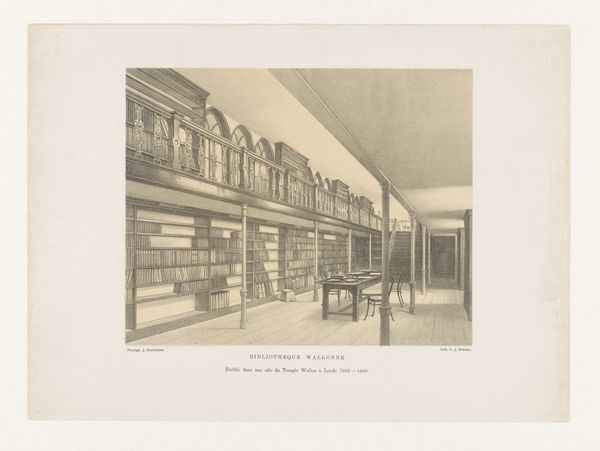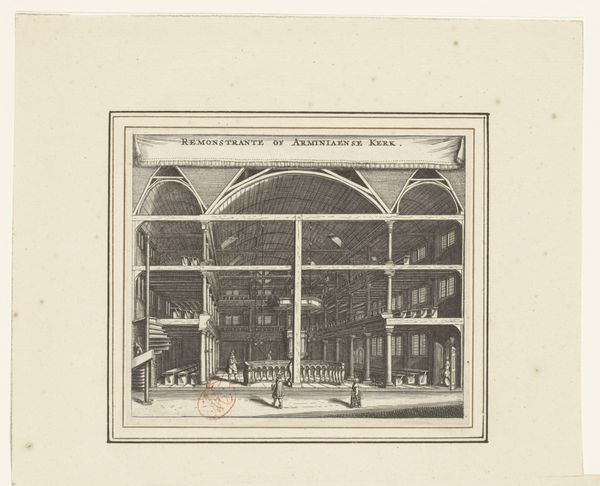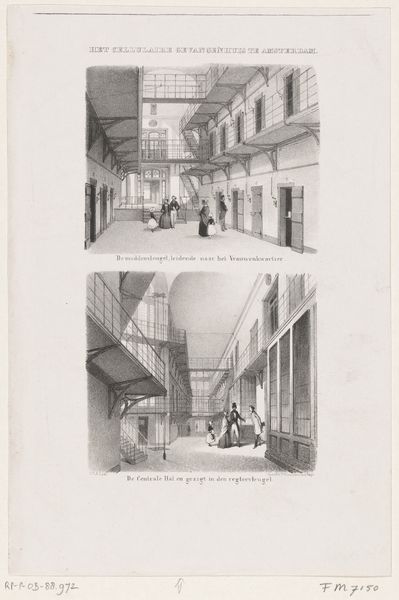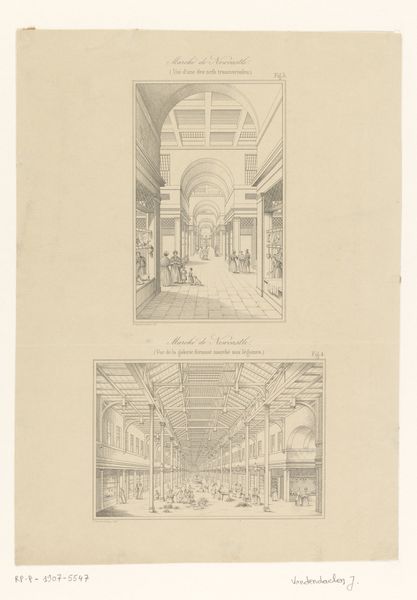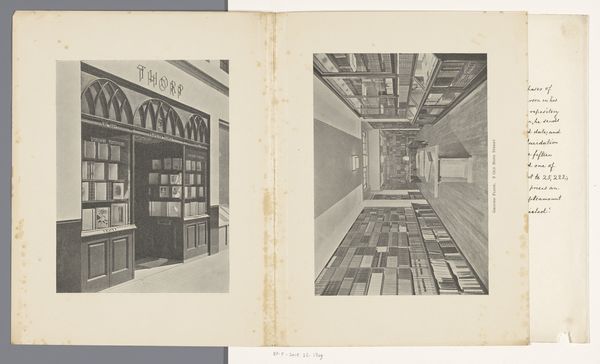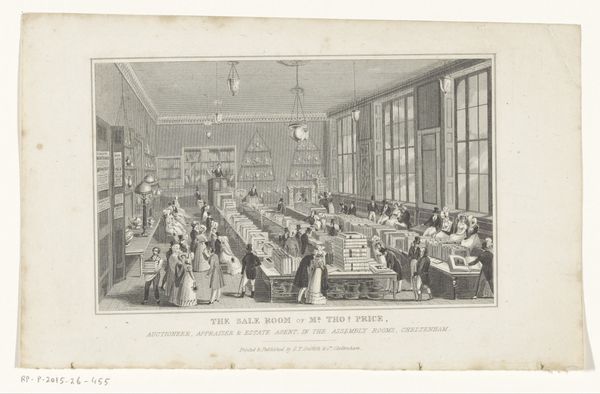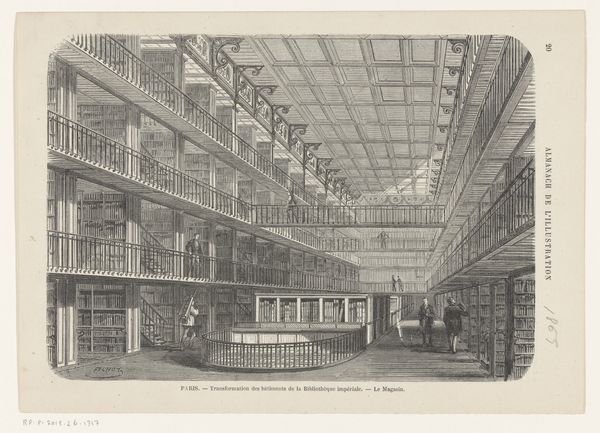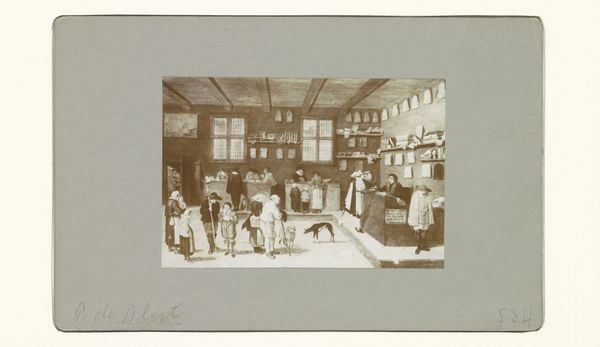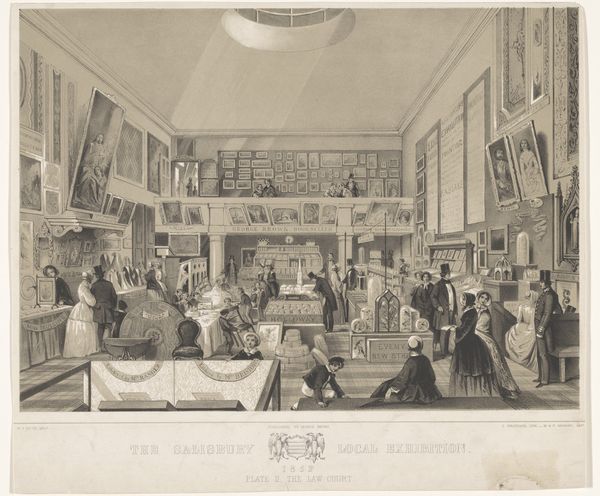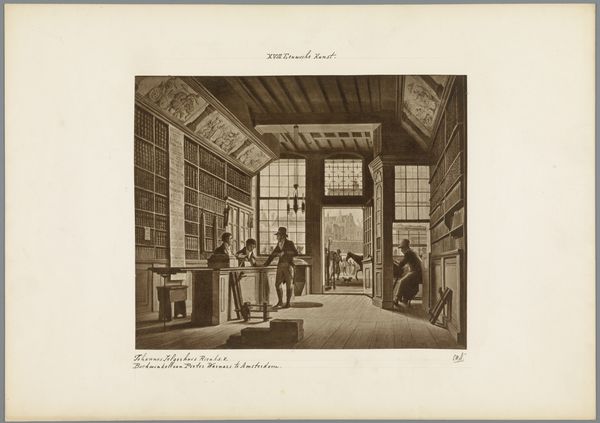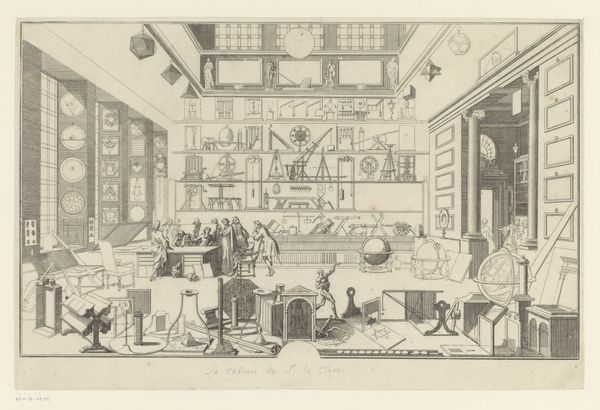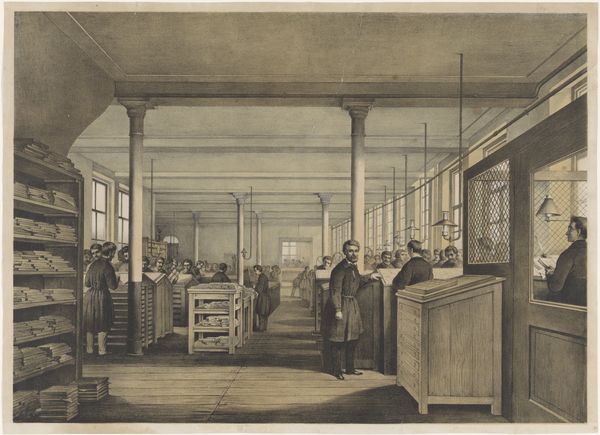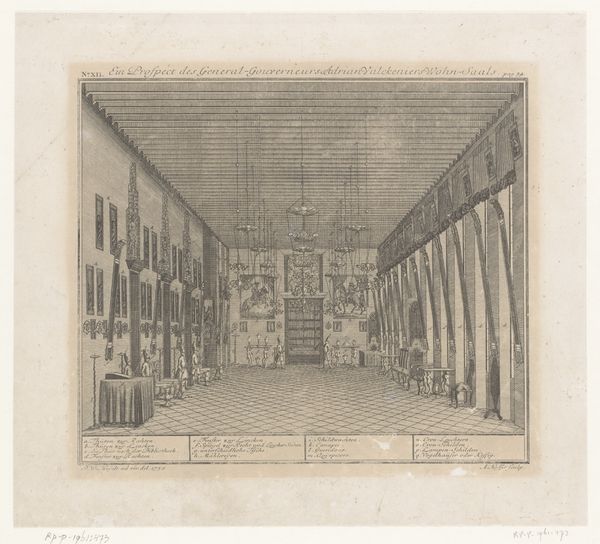
graphic-art, print, engraving
#
graphic-art
#
16_19th-century
# print
#
cityscape
#
genre-painting
#
engraving
#
realism
Dimensions: height 250 mm, width 165 mm
Copyright: Rijks Museum: Open Domain
Curator: Looking at this print, there's a real emphasis on labor. Editor: Agreed. It's also just plain intriguing. The artwork, "Typografische Tentoonstelling, 1856" by Carel Christiaan Antony Last, seems almost like a snapshot in time, an intimate glimpse into a very specific cultural moment. The medium here is engraving, you can notice very sharp lines everywhere. Curator: I immediately read it as a commentary on class and access to information in 19th-century Netherlands. Who gets to produce the word and who gets to consume it, you know? I wonder about the labor behind those typographic works. Editor: Good point. And it seems deliberately displayed here! One room with presses in action, showcasing the active making, the labor… And a second one focused on the products. It’s such an overt presentation of a specific type of cultural production, isn't it? What's striking is the way the print showcases both the creation and the consumption of these typographic works within the cityscape it tries to convey. The material realities are quite palpable. Curator: Right! Who were these people attending this exposition, and what impact did it have on disseminating radical ideas in its own time? Where there conversations about power happening among them? Or only about artistry? Editor: An engraving like this, documenting it for the world, participates in that culture, creating this event in time, in perpetuity! This form of documentation has to become integrated into the historical memory as an exercise of power that reproduces a specific culture and reinforces an ideology in doing so. The act of representation itself has consequences. Curator: That's precisely why these material records become invaluable, they're tools to understand cultural identity back then but they could also, ironically, empower marginalized voices by acknowledging they existed back in those days. What a time-machine, eh? Editor: The focus is quite balanced and fair I guess. Seeing it as material, I also see it documenting what work looked like back then and maybe that could spark conversations about social change from today's perspective too. Curator: Definitely! By re-contextualizing and understanding its initial goals. What an engaging material object with endless discussions and new voices ready to bring new visions to the stage, almost two centuries after its creation!
Comments
No comments
Be the first to comment and join the conversation on the ultimate creative platform.
